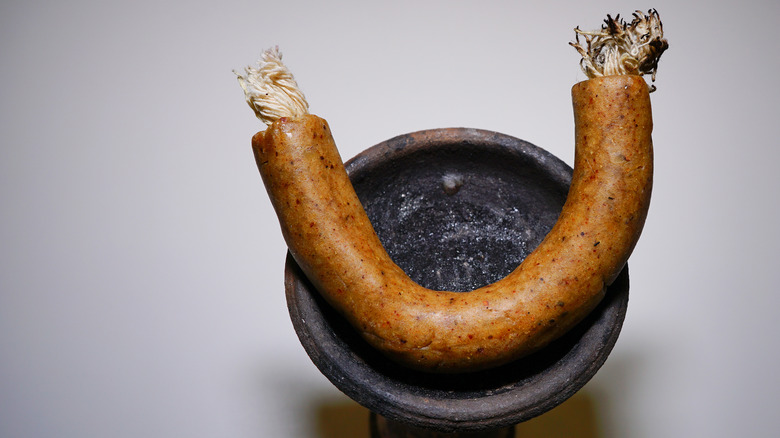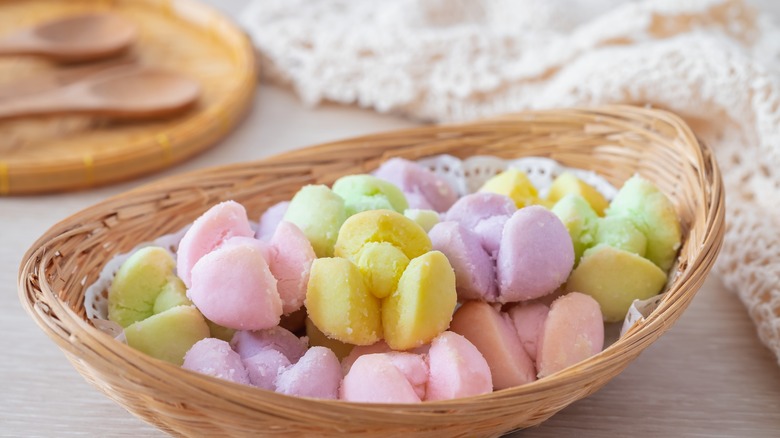How A Humble Candle Is Utilized To Flavor Classic Thai Dishes
Whether you're going with an ever-popular pad Thai recipe or fresh som tam salad, Thai food is bursting with flavor. So it's no surprise to see Thai desserts have an equally powerful sense of taste. The interesting twist is that some of the flavors don't come from the ingredients inside the dish but are instead absorbed from the air. That's right, we're talking about the culinary incense known as tian op, otherwise known as the Thai dessert candle.
Tian op is a sausage-shaped incense candle with wicks on both ends, typically curved into a U-shape. Inside, you'll find aromatics like the earthy frankincense, the floral ylang-ylang, and the musky patchouli, resulting in an aromatic concoction with notes of warm vanilla on an old pine tree. It's pungent and rich with an edge of sweetness. Thai cooks have traditionally used it to imbue cookies, cakes, and other desserts with its complex haze of perfumes.
The history of tian op
The idea of aromatics in cooking isn't unique to this one incense candle. Several dishes use similar smoking styles both in Thailand and other areas of South and Southeast Asia, like dhungar where hot charcoal is covered in ghee to add a smoky flavor. But tian op is unique to Thailand. No other country is associated with this distinctive aromatic.
First created by the Thai royal court, tian op is most commonly associated with bakeries and fine dining today. Thai bakeries are struggling to compete with less time-consuming and less expensive desserts. However, many still serve the traditional Thai goods associated with tian op, like khanom kleeb lamduan (Thai shortbread cookies) and sarim, a sweet noodle dish served in coconut milk syrup. Tian op is reasonably available, but it has essentially returned to its original status as an ingredient for the upper echelons of social class. As the bakeries struggle to find a way to make tian op economically competitive and its use in home baking continues to decline, world-class chefs are beginning to include it in their complex creations at Michelin-starred restaurants.
How to use tian op
If you want to try tian op at home, look for it at your local Asian market. If it's not there, you can find several options to choose from online. Once you've decided which Thai dessert you're going to make, the process is pretty simple. Let's say you're making shortbread cookies. When they're done baking and have cooled off, you'll place them in a bowl around the tian op, which will sit so that the wicks are standing straight up. You'll light both wicks and then cover the bowl so no air can escape. Without oxygen, the wicks will go out and the smoke will infuse the cookies. After a few minutes, remove the cover and enjoy.
Other recipes will call for the infusion to occur before the dessert has been prepared, usually focusing on one ingredient. For sarim, the coconut milk is infused so, before you add it to the dish, you will place it in a bowl with the tian op. Sometimes flour is infused, sometimes cream cheese; it depends on the recipe. But in each case, you'll infuse the ingredient or dessert in a similar way: by covering it in a bowl for a few minutes. The longer it's in the smoke infusion, the stronger the aroma will be.


